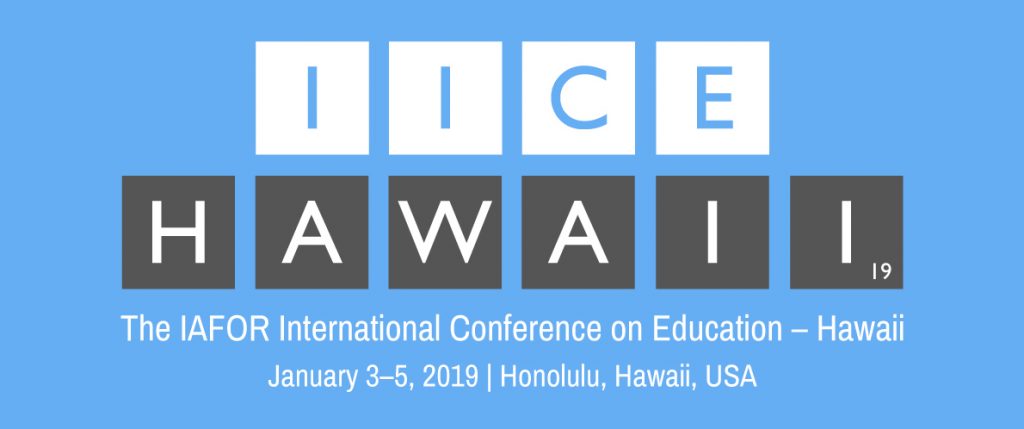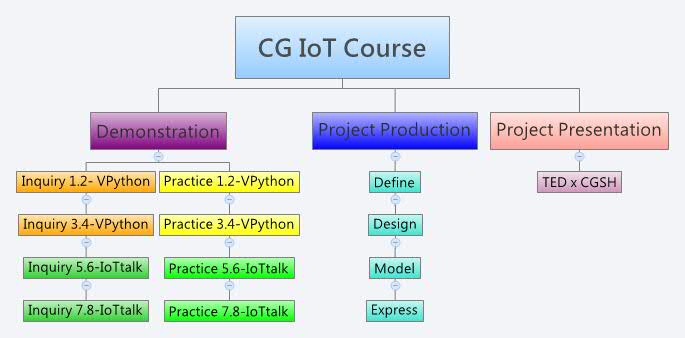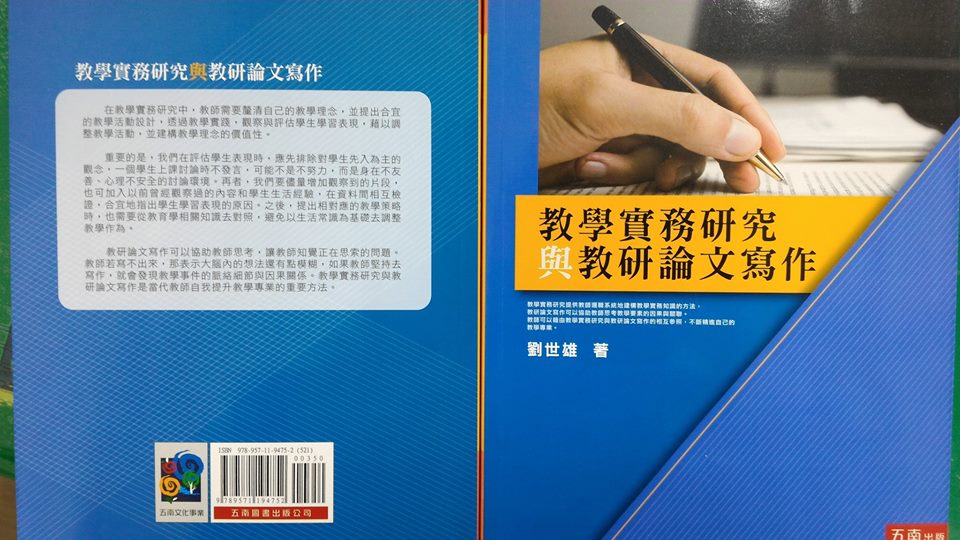Classroom practice of Internet of Thing by device communication with interactive science experiments in senior high school
Acknowledge: This project is partly supported by Ministry of Science and Technology under Grant
MOST 107 (106, 105)-2514-S-791-001.
MOST 107 (106, 105)-2514-S-791-002.
Duration: 2016/11/1 – 2019/7/31
Cooperation: Chung-Gang Senior High-school (CGSH), National Taichung University of Education (NTUE), and Providence University (PU)
Contact Information: Dr. Tsun-Hsin Wang wthwth@mail.cgsh.tc.edu.tw
(I) The IAFOR International Conference of Education 2019.1.3-5, Hawaii, America.
Conference: IICEHawaii
Title: An inquiry-implement-expression teaching of Internet of Thing integrated to Physics course
Stream: Innovation & Technology (Design, Implementation & Assessment of Innovative Technologies in Education)
Type: Oral
Authors: Tsun-Hsin Wang,1* Wen-Sun Chou,1 Sidney Chang,1 Tsan-Pin Wang,2 Hsiao-Shen Wang,2 Hsiao-Hsi Wang,3 and Kuo-Yu Liu3
Affiliations: 1Taichung Municipal Chung-Gang Senior High-school, Taiwan
2National Taichung University of Education, Taiwan
3Providence University, Taiwan
Contact information: wthwth@cgsh.tc.edu.tw
Topic: Internet of Thing, Python, IoTtalk, Inquiry, Implement.
Abstract
An inquiry-implement-expression teaching of Internet of Thing (IoT) integrated to physics course at a senior high-school is proposed in this work. The teaching methods include inquiry teaching, implement process, and expression assessment. The simulation programs, so-called VPhysics course, on Physics kinematics and mechanics were developed with Visual Python program and IoTtalk which is provided by Professor Yi-Bing Lin. Our action research shows the students with inquiry-implement-expression teaching have better performance over conventional teaching counterpart due to higher learning motivation, more activity engagement, and wider innovation-ability.
(II) Asian Conference of Education & International Development 2019.3.24-25, Tokyo, Japan.
Conference: ACEID 2019
Title: An inquiry-implement-expression teaching of Science
Stream: Innovation & Value
Type: Poster
Authors: Tsun-Hsin Wang,1* Wen-Sun Chou,1 R.-D. Lin,1 Tsan-Pin Wang,2 Hsiao-Shen Wang,2 Hsiao-Hsi Wang,3 and Kuo-Yu Liu3
Affiliations: 1Taichung Municipal Chung-Gang Senior High-school, Taiwan
2National Taichung University of Education, Taiwan
3Providence University, Taiwan
Contact information: wthwth@cgsh.tc.edu.tw
Topic: Inquiry, Implement, Expression.
Abstract
An inquiry-implement-expression teaching of Science at a senior high-school is proposed in this work. The teaching methods include inquiry teaching, implement process, and expression assessment. The interdisciplinary topics, among Physics, Chemistry, Biology, and Earth Science, were developed with literacy-oriented course design. The scientific literacy includes scientific attitude, scientific skill and methods, and scientific knowledge. Based on our pioneering research, it shows the students with inquiry-implement-expression teaching have better performance over conventional teaching counterpart due to higher motivation, more engagement in classroom, and wider innovation-development.
(III) Project abstract:
Easy connect of Internet of Thing (IoTtalk) invented by Professor Yi-Bing Lin at National Chiao-Tung University had been widely applied in good-flow, cash-flow, and man-flow up to date. The advantages of IoTtalk, which is a sharp tool for information recreation, interactive teaching, and formative assessment, are easy to invent, utilize, and expand. Additionally, course modules of VPhysics provided by Professor Ming-Feng Shih at National Taiwan University had attracted much attention for his achievement of visualization and virtualization with Python into physics education. With IoTtalk and VPhysics, the promotion of physics learning and programming ability of 107 course outline can be realized by intuitive numerical experiments to replace the traditional and boring theory deduction.
As a result, our project had made students become maker of inquiry and implement. The pioneer achievement pushed us to propose this project. The action research of IoTtalk can be divided into three years. The first year, the primary trial by school-base study, we will (1-1) envelop teaching modules with IoTtalk and realize the problem-based learning (PBL) and (1-2) feedback our results to cooperation universities.
The second year, the spread of inter-schools, we will (2-1) refine our former studying and (2-2) integrate vertically the courses of junior high school and senior high school.
The last year, the international spread, we will (3-1) refine our former results. If the study has notable key performance index, we will (3-2) evaluate the possibility of next stage for more study and investigation.
(IV) SAKURA Science High School Program (SSHP) 2017:
Agency: Japan Science and Technology Agency(JST)
Duration: 2017.5.21-2017.5.27
Selected and sponsored by High Scope Program.
(V) Appendix chapter in specific topic published by Wu-nan Book Company: (ISBN: 978-957-11-9475-2)
Study of Teaching Practice with Internet of Thing by Inquiry and Implement Method.
- Teaching prospective and goal
- Theory analysis and teaching design
- Realization of teaching and learning records
- Performance analysis
- Goal reflection
(VI) Super Science High School Students Fair (SSH) 2017:
Classroom practice of scientific inquiry-based courses with Internet of Thing (IoT) is studied enthusiastically. Senior high school students in Taiwan have been experiencing the superior characteristics of information technology innovation and interactive teaching by introducing Python programming into Physics simulation.
In the aforementioned pioneer study, teachers flip didactic teaching into inquiry approach to teaching. The students, who have taken the Problem Based Learning (PBL) courses, flip passive learning of examination orientation over initiative learning of maker orientation with scientific attainments. Our preliminary study shows that learning motivation of student participants has been on the increase, active exploration and enthusiastic trial of the unknown field is observed more frequently by the visualized, numerical courses of computer aided instruction (CAI).
We have successfully attracted the social concerns and media reports on the scientific inquiry-based courses. In the next three years, we will progress the course development and refinement which include intra-school promotion, inter-school promotion of Chung-Gang Learning Chain, and international cooperation of high-level students. We hope students at home and abroad will have the chance to experience our project of scientific inquiry-based courses with IoT.




